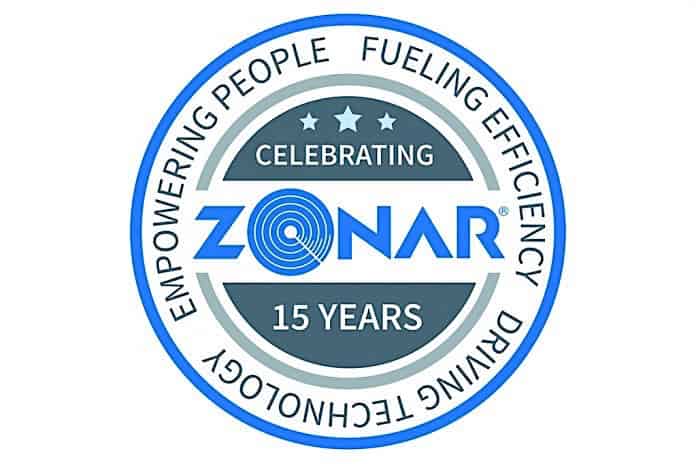Zonar CEO & President Ian McKerlich explains economies of scale, expanded reach resulting from last year’s acquisition by Continental AG.
 Zonar President and CEO Ian McKerlichSchool Transportation News: What common questions are customers asking about the acquisition and how it will not only affect Zonar but their local operations?
Zonar President and CEO Ian McKerlichSchool Transportation News: What common questions are customers asking about the acquisition and how it will not only affect Zonar but their local operations?
McKerlich: The most common question I get is: ‘What kind of company is Continental?’ Some people may think Continental is only a tire company, but it’s actually a well-established automotive and commercial vehicle technology company. In fact, a large part of their revenue is generated outside of their tire and consumer businesses.“What are you doing with a tire company?” is another common question. The simple answer is they have great distribution and technology. We are continuing our relationship with Daimler Trucks of North America, which includes Thomas Built Buses and gives us two fantastic and established principle shareowners. We will continue to implement customer ideas and anticipate working closely with Continental to develop even more innovative products for the market, strengthening our ability to directly address customer needs, and implementing solutions that directly address their problems. In terms of our local operations, we expect to continue to grow and operate as an independent entity within the Continental family.
STN: Kevin Mest, Zonar’s senior VP and GM of passenger services, recently told us that Continental’s resources will allow you to bring more solutions to the market. What kinds of trends are you identifying as potential targets?
McKerlich: I was fortunate enough to have met with Continental before their investment in Zonar, and I’m still meeting with new people there today. I see a lot of potential around camera and sensor technologies within the school bus market. We’re exploring technology that could not only monitor what goes on inside the bus but also keep track of the perimeter of the bus and what is going on in the adjacent areas. This will be especially important as more districts and states consider legislature to protect passengers on school buses. Another trend we’re watching more closely because of Continental’s established market presence in tires is connected solutions for monitoring tire pressure. Continental has very innovative technology for tire pressure that we think we may be able to tap into down the road. Lastly, Continental has significant market share as an OEM with dozens of components within buses, commercial vehicles and passenger cars. We’ll leverage what we learn to develop products that will benefit our school bus fleet customers.
STN: How is Zonar integrating Continental’s economies of scale and technologies with those of Daimler?
McKerlich: While we have a collaborative and productive relationship with both companies, the things that we work on with Continental and Daimler are separate, proprietary and confidential to each company. They are both shareholders and partners but there isn’t as much overlap between the two companies with Zonar is it may seem. What is exciting is that they are both great board members and have incredible programs that encourage and enable our delivery of innovative offerings to the market. Just recently, Zonar was awarded by Daimler an Innovation Award in the category of commercial vehicles and buses.
STN: How is the Zonar Connect tablet coming along in terms of adoption by school bus operators?
McKerlich: We’ve seen a lot of interest from the school bus market in the Connect’s predecessor, the 2020 tablet. With Connect, which is just hitting the market now, we expect even bigger adoption. In addition to the tablets, there has also been a lot of interest in our existing applications to help school bus operators, manage their fleets, drivers and passengers more effectively.
The driving force behind the interest and adoption of the tablets is about the ability to have an interactive console that school bus fleet managers and drivers can utilize to be more efficient—whether it’s driving the right route, driver coaching or managing ridership. Plus, the Connect and 2020 are both mobile devices equipped with our Electronic Verified Inspection Reporting (EVIR) solution which can be used for pre- and post-trip inspections, including scanning a tag in the back of the bus to ensure that a child check has occurred.
STN: With so much data flowing into and out of the school bus, how is the average school district expected to make sense of it all?
McKerlich: The amount of data flowing in and out of the bus is only going to grow as time goes on and as more innovation enters the industry with things like the Connect tablet and the applications mentioned previously. It’s up to application and service providers to turn the data from buses into information and insights that ultimately improve the safety and efficiency of school bus operation and experience for drivers and passengers. That only happens through thoughtful design and careful data analysis.
STN: Taking this a step further, what are your thoughts on the role or feasibility of digital event recorders and continuous loop data for school buses?
McKerlich: I think they provide a wealth of information that can improve the safety and efficiency of school bus operations. With insights from digital event recorders, fleet managers can take preventative and proactive measures to address drivers operating buses outside of standard operating procedures. Additionally, fleet managers can gain visibility into engine diagnostics and management to keep the vehicles operation and well maintained. With this information they can make informed maintenance and operational decisions. Digital event services also provide opportunities in terms of rider management such as ‘What’s going on in the back of the bus?’ We’re working with Continental to explore this space and identify opportunities.
STN: Finally, with the Paul Lee law in California, are you sensing any trends toward child detection requirements in buses from other states? How does Z Pass play into that?
McKerlich: We aren’t aware of any pending legislation at this time, but whenever there is a tragedy, school districts should re-examine their standard school bus operation procedures, whether it’s the law or not. We believe performing child checks in the back of the bus is something all fleets should do. We have three hardware solutions and service that ensure that drivers are doing this important inspection to protect the safety of their passengers.
Z Pass is a great product for tracking when students get on and off the bus, but in terms of the Paul Lee Law; EVIR is the Zonar solution that addresses it. EVIR is on the Zonar 2010 handheld device and both the 2020 and Connect tablets enabling each device for pre- and post- trip inspection reports. It can also importantly be easily configured to be used for child check with the placement of a RFID tag in the back of the bus. We are seeing a lot of districts both in and out of California configuring their systems for child checks this way; drivers are required to go to the back of the bus, scan the tag and acknowledge that there aren’t any students there before they leave the bus. Additionally, the driver and fleet manager get a digital record of that journey and trip, including when and where that inspection takes place.
STN: Thank you.
Reprinted from the May 2017 issue of School Transportation News magazine.















